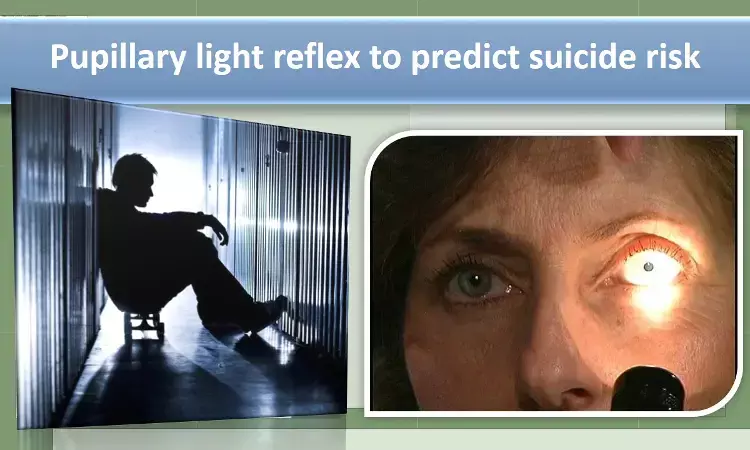- Home
- Medical news & Guidelines
- Anesthesiology
- Cardiology and CTVS
- Critical Care
- Dentistry
- Dermatology
- Diabetes and Endocrinology
- ENT
- Gastroenterology
- Medicine
- Nephrology
- Neurology
- Obstretics-Gynaecology
- Oncology
- Ophthalmology
- Orthopaedics
- Pediatrics-Neonatology
- Psychiatry
- Pulmonology
- Radiology
- Surgery
- Urology
- Laboratory Medicine
- Diet
- Nursing
- Paramedical
- Physiotherapy
- Health news
- Fact Check
- Bone Health Fact Check
- Brain Health Fact Check
- Cancer Related Fact Check
- Child Care Fact Check
- Dental and oral health fact check
- Diabetes and metabolic health fact check
- Diet and Nutrition Fact Check
- Eye and ENT Care Fact Check
- Fitness fact check
- Gut health fact check
- Heart health fact check
- Kidney health fact check
- Medical education fact check
- Men's health fact check
- Respiratory fact check
- Skin and hair care fact check
- Vaccine and Immunization fact check
- Women's health fact check
- AYUSH
- State News
- Andaman and Nicobar Islands
- Andhra Pradesh
- Arunachal Pradesh
- Assam
- Bihar
- Chandigarh
- Chattisgarh
- Dadra and Nagar Haveli
- Daman and Diu
- Delhi
- Goa
- Gujarat
- Haryana
- Himachal Pradesh
- Jammu & Kashmir
- Jharkhand
- Karnataka
- Kerala
- Ladakh
- Lakshadweep
- Madhya Pradesh
- Maharashtra
- Manipur
- Meghalaya
- Mizoram
- Nagaland
- Odisha
- Puducherry
- Punjab
- Rajasthan
- Sikkim
- Tamil Nadu
- Telangana
- Tripura
- Uttar Pradesh
- Uttrakhand
- West Bengal
- Medical Education
- Industry
Pupillary light reflex may predict suicide risk in psychiatric patients, Study.

Suicide remains highly prevalent in patients with psychotic and mood disorders. An impediment to suicide prevention efforts is the lack of practical biomarkers of imminent risk of suicidal ideation/behavior/death (SIB).
In this regard, it has been suggested that hyperarousal—a state of increased physiologic arousal, which may manifest as insomnia, hypervigilance, agitation, and/or irritability—is mediated in part by both noradrenergic (NE) and cholinergic (ACh) systems and a potential marker for SIB.
A study published in Schizophrenia Research journal by Brian J. Miller et al. indicates that the pupillary light reflex (PLR) is a candidate marker of physiologic arousal, as proximal control of pupillary constriction and dilation is governed by acetylcholine (Ach) and norepineohrine (NE), respectively.
The researchers recruited 26 patients with schizophrenia and 42 with major depressive disorder (MDD) age 18–60 years. None of the subjects had a history of alcohol or substance use disorder, and all were free of medications with strong effects on the NE or ACh systems. 2 patients with schizophrenia were psychotropic-free, 4 were treated with first-generation and 20 with non-clozapine second-generation antipsychotics.
11 patients with schizophrenia were treated with antidepressants (8 on SSRIs, two on SNRIs, and one on bupropion). Patients completed the Columbia Suicide Severity Rating Scale (C-SSRS). PLR was measured. Patients were subcategorized based on "ever attempted suicide" (yes/no), as well as "currently suicidal" (yes/no) status based on the CSSRS (lifetime suicide attempts and a score > 0 for the suicidal ideation subscale, respectively).
Patients with schizophrenia had significantly smaller initial and end pupil diameters compared to patients with MDD, but otherwise there were no differences in PLR parameters between subject groups.
"Currently suicidal" versus "not currently suicidal" patients with schizophrenia or MDD had significantly smaller end pupil diameter and faster pupillary average constriction velocity (ACV) (p < 0.01).
In logistic regression models controlling for age, sex, race, and diagnosis, faster ACV was a significant indicator of both "currently suicidal" and "ever attempted suicide" status. Among subjects with no prior suicide attempts, both faster ACV and MCV were significant indicators of "currently suicidal" status.
The findings support the feasibility of using pupillometry to investigate the PLR as an easily-obtained, rapidly-acquired, objective, potential point-of-care test for SIB that can supplement clinical management.
The same team of researchers had recently demonstrated that faster pupillary maximum constriction velocity (MCV), measured by the PLR, was a significant predictor of "ever suicidal" versus "never suicidal" status in patients with MDD and controls. Longitudinal studies are needed to investigate whether the PLR is a mutable indicator of SIB, towards better suicide prevention.
Source: Schizophrenia research: doi: 10.1016/j.schres.2021.06.027
M.B.B.S, M.D. Psychiatry
M.B.B.S, M.D. Psychiatry (Teerthanker Mahavir University, U.P.) Currently working as Senior Resident in Department of Psychiatry, Institute of Human Behaviour and Allied Sciences (IHBAS) Dilshad Garden, New Delhi. Actively involved in various research activities of the department.
Dr Kamal Kant Kohli-MBBS, DTCD- a chest specialist with more than 30 years of practice and a flair for writing clinical articles, Dr Kamal Kant Kohli joined Medical Dialogues as a Chief Editor of Medical News. Besides writing articles, as an editor, he proofreads and verifies all the medical content published on Medical Dialogues including those coming from journals, studies,medical conferences,guidelines etc. Email: drkohli@medicaldialogues.in. Contact no. 011-43720751


